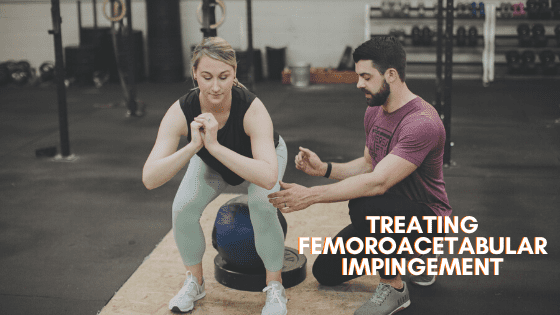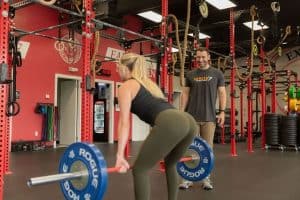
Maybe it’s a sharp pinch in your hip that strikes in your squat. On the other hand, maybe it nearly takes your breath away while bending down to grab your laundry. Femoroacetabular impingement (aka FAI or hip impingement) can strike anywhere. This painful condition of the hip can disrupt not only your fitness routine but activities of daily living as well. Much of the medical and rehabilitation world has struggled with managing FAI for years. If you’re suffering from this condition, you’ve probably experienced the frustrations of trial and error seeking relief. Further, the wildly varying treatment options can be a confusing spiral. We hope to clear some of that confusion up for you. In this article, we’ll outline the two general types of femoroacetabular impingement. We see these conditions often in our clinic where we specialize in treating frustrating FAI symptoms like yours.
Type I. Structural Femoroacetabular Impingement
In your research, this is probably what you have read about the most. For example, this can be broken down into two subgroups of cam and pincer impingement (or combined). This category refers to impingement caused by boney growth limiting the available range of motion in the hip joint. Commonly, the prescribed treatment route is a debridement (or removal) of the bone growth to address this limitation. This procedure is becoming increasingly more popular, but recent research questions the effectiveness of FAI surgeries. Clinically, we find the following steps successfully provide our patients with relief of their femoroacetabular impingement symptoms.
First, we work to optimize the available range of motion inside of the hip joint. This is challenging given the bone growth. Fortunately,, we have found specific, targeted exercises (posterior capsule self-mobilizations for instance) are a great way to do just that.
Second, we look at the joints above and below the hip and find ways to improve mobility. As a result, this helps enhance mechanics during movement. A great example of this can be seen in the squat. If an athlete has more ankle mobility, their squat will require less hip motion. Consequently, this can relieve some stress from irritated tissues.
Third, a solid activity-specific assessment of an individual’s movement patterns is crucial. Additionally, this is a great opportunity to strategize ways to rapidly decrease symptoms. For a runner, this means performing a treadmill gait analysis. For a CrossFit athlete, this means analyzing their squats, deadlifts, Olympic lifts, etc. Whatever sports/activities you participate in, you MUST see a professional that watches you perform those movements. Treating femoroacetabular impingement does not mean you have to stop exercising!

Type II. Functional FAI
We refer to the second type of femoroacetabular impingement as “functional impingement”. To clarify, unlike the previous individual, this person isn’t limited by boney obstruction. Instead, this person experiences a decrease in joint stability resulting in anterior hip pain. Similarly, a few simple steps can be life changing for individuals suffering from this type of femoroacetabular impingement as well.
First, in treating femoroacetabular impingement we stop stretching the hip flexors. Yes! You read that right. And yes, it is the exact opposite of what you’ll hear nearly everywhere else. The hip flexors provide a lot of stability to the anterior hip. We find that focusing on strengthening this muscle group rather than stretching it is significantly more effective.
Next, we focus on helping individuals “own their hip mobility”. For many with functional femoroacetabular impingement, their pain comes on far before reaching the end of their hip joint’s motion. To address this, we incorporate controlled articular rotations (CARs) . In other words, this works on strengthening the hip throughout its full range of motion. This strategy improves joint stability, function, and pain.
Finally, just like in structural femoroacetabular impingement, we must look at the specific activities causing your pain. By analyzing these movements, we can come up with strategies to ease your symptoms. Above all, we want to get you back to doing what you love!
Ready to get your life back?
At Onward, treating individuals with FAI is our specialty and what we are most passionate about. We’re just as tired as you are of mismanagement of this condition and seeing people suffer for years without relief. We’d love to team up with you to regain your freedom! Schedule an appointment today with our physical therapy team to get on the road to recovery.
Recent Articles
Why Early Intervention Physical Therapy Accelerates Your Recovery

What to Expect at Your First Physical Therapy Session?

How to Choose a Physical Therapist

The Top 5 Misconceptions About Physical Therapy

The Complete Guide to Physical Therapy

